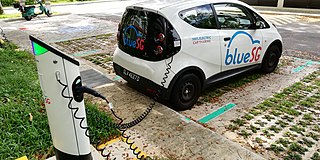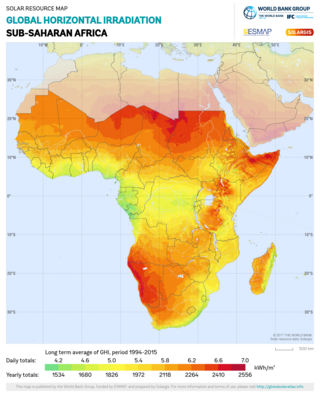An autonomous building is a building designed to be operated independently from infrastructural support services such as the electric power grid, gas grid, municipal water systems, sewage treatment systems, storm drains, communication services, and in some cases, public roads.
Sustainable living describes a lifestyle that attempts to reduce the use of Earth's natural resources by an individual or society. Its practitioners often attempt to reduce their ecological footprint by altering their home designs and methods of transportation, energy consumption and diet. Its proponents aim to conduct their lives in ways that are consistent with sustainability, naturally balanced, and respectful of humanity's symbiotic relationship with the Earth's natural ecology. The practice and general philosophy of ecological living closely follows the overall principles of sustainable development.

College of the Atlantic (COA) is a private liberal arts college in Bar Harbor on Mount Desert Island, Maine. Founded in 1969, it awards bachelors and masters (M.Phil.) degrees solely in the field of human ecology, an interdisciplinary approach to learning. Focus areas include arts and design, environmental sciences, humanities, international studies, sustainable food systems, teacher certification and educational studies, and socially responsible business. The College of the Atlantic is accredited by the New England Commission of Higher Education.

Water conservation aims to sustainably manage the natural resource of fresh water, protect the hydrosphere, and meet current and future human demand. Water conservation makes it possible to avoid water scarcity. It covers all the policies, strategies and activities to reach these aims. Population, household size and growth and affluence all affect how much water is used.

Rainwater harvesting (RWH) is the collection and storage of rain, rather than allowing it to run off. Rainwater is collected from a roof-like surface and redirected to a tank, cistern, deep pit, aquifer, or a reservoir with percolation, so that it seeps down and restores the ground water. Rainwater harvesting differs from stormwater harvesting as the runoff is typically collected from roofs and other area surfaces for storage and subsequent reuse. Its uses include watering gardens, livestock, irrigation, domestic use with proper treatment, and domestic heating. The harvested water can also be committed to longer-term storage or groundwater recharge.

Sustainable architecture is architecture that seeks to minimize the negative environmental impact of buildings through improved efficiency and moderation in the use of materials, energy, development space and the ecosystem at large. Sustainable architecture uses a conscious approach to energy and ecological conservation in the design of the built environment.

The Solar Electric Light Fund (SELF) is a non-profit organization whose mission is to design, fund and implement solar energy solutions to benefit those in poor rural communities without access to an electrical grid. This allows students to study at night and brings computers and Internet into schools. It makes it possible to bring in water for irrigation without having to hand-carry it long distances, allowing women to spend their time on money-earning enterprises. Access to electricity and water improves health care. SELF has completed several projects in more than 20 countries including a solar powered drip irrigation in Benin, a health care centre in Haiti, telemedicine in the Amazon rainforest, online learning platform in South Africa, and a microenterprise development in Nigeria.
The Earth Institute is a research institute at Columbia University created in 1995 for addressing complex issues facing the planet and its inhabitants, with a focus on sustainable development. With an interdisciplinary approach, this includes research in climate change, geology, global health, economics, management, agriculture, ecosystems, urbanization, energy, hazards, and water. The Earth Institute's activities are guided by the idea that science and technological tools that already exist could be applied to greatly improve conditions for the world's poor, while preserving the natural systems that support life on Earth.

Solar-powered pumps run on electricity generated by photovoltaic (PV) panels or the radiated thermal energy available from collected sunlight as opposed to grid electricity- or diesel-run water pumps. Generally, solar-powered pumps consist of a solar panel array, solar charge controller, DC water pump, fuse box/breakers, electrical wiring, and a water storage tank. The operation of solar-powered pumps is more economical mainly due to the lower operation and maintenance costs and has less environmental impact than pumps powered by an internal combustion engine. Solar pumps are useful where grid electricity is unavailable or impractical, and alternative sources do not provide sufficient energy.

Clean technology, also called cleantech or climatetech, is any process, product, or service that reduces negative environmental impacts through significant energy efficiency improvements, the sustainable use of resources, or environmental protection activities. Clean technology includes a broad range of technology related to recycling, renewable energy, information technology, green transportation, electric motors, green chemistry, lighting, grey water, and more. Environmental finance is a method by which new clean technology projects can obtain financing through the generation of carbon credits. A project that is developed with concern for climate change mitigation is also known as a carbon project.
Stanford University has many centers and institutes dedicated to the study of various specific topics. These centers and institutes may be within a department, within a school but across departments, an independent laboratory, institute or center reporting directly to the dean of research and outside any school, or semi-independent of the university itself.
Green building on college campuses is the purposeful construction of buildings on college campuses that decreases resource usage in both the building process and also the future use of the building. The goal is to reduce CO2 emissions, energy use, and water use, while creating an atmosphere where students can be healthy and learn.
The Morgridge Institute for Research is a private, nonprofit biomedical research institute in Madison, Wisconsin, U.S., affiliated with the University of Wisconsin–Madison. The institute works to improve human health by conducting, enabling and translating interdisciplinary biomedical research. Research areas include regenerative biology, virology, metabolism, and computational biology.
Columbia Global Centers are research outposts established by Columbia University in different locations around the world, as part of its initiative to further establish an international research university. The first of these centers opened in March 2009 in Beijing, China, and Amman, Jordan, and Columbia opened facilities in Paris, France, and Mumbai, India, in March 2010 and Istanbul, Turkey in November 2011. Locations in Nairobi, Rio de Janeiro and Santiago de Chile were opened in 2012 and 2013. An additional location in Tunis opened in 2018.

"Sustainability," was defined as “development which implies meeting the needs of the present without compromising the ability of future generations to meet their own needs”as defined by the 1983 Brundtland Commission. As sustainability gains support and momentum worldwide, universities across the United States have expanded initiatives towards more sustainable campuses, commitments, academic offerings, and student engagement.

The use of solar energy in rural areas across sub-Saharan Africa has increased over the years. With many communities lacking access to basic necessities such as electricity, clean water, and effective irrigation systems; the innovations in solar powered technologies have led to poverty alleviation projects that combine development strategies and environmental consciousness. Another use for solar energy that has gained momentum in rural African households is that of solar cooking. Historically, the high dependency on wood collection from depleting sources have resulted in serious environmental degradation and has been considered an extremely unsustainable practice when compared to the renewable attribute of solar powered cooking. There have also been recent links made between solar energy and increased food security in the region. African development projects, mostly in rural areas seem to be recognizing the real potential of renewable energy sources especially power derived from the sun.
Rosamond (Roz) Lee Naylor is an American economist focused on global food security and sustainable agriculture. She is the William Wrigley Professor of the Stanford University School of Earth System Science, and the founding Director of the Center on Food Security and the Environment at Stanford University. Her academic career has centered on environmental science and policy related to global food systems and food security. She is the President of the Board of Directors of the Aspen Global Change Institute, a Fellow of the Ecological Society of America, and a member of the Forest Protection Advisory Panel for Cargill.
Erika S. Zavaleta is an American professor of ecology and evolutionary biology at the University of California, Santa Cruz. Zavaleta is recognized for her research focusing on topics including plant community ecology, conservation practices for terrestrial ecosystems, and impacts of community dynamics on ecosystem functions.
Sandra Pascoe Ortiz is a Mexican researcher and chemical engineer. She is a faculty member at the Universidad del Valle de Atemajac in Zapopan. Ortiz is known for developing a non-toxic, renewable, and biodegradable plastic alternative made from cactus juice.
The Stanford Doerr School of Sustainability is a school at Stanford University focusing on climate change and sustainability. The school also researches many domains of fossil fuel extraction and development. It opened on September 1, 2022, as Stanford's first new school since the School of Humanities and Sciences in 1948. It is considered one of the largest climate change–related schools in the United States.









